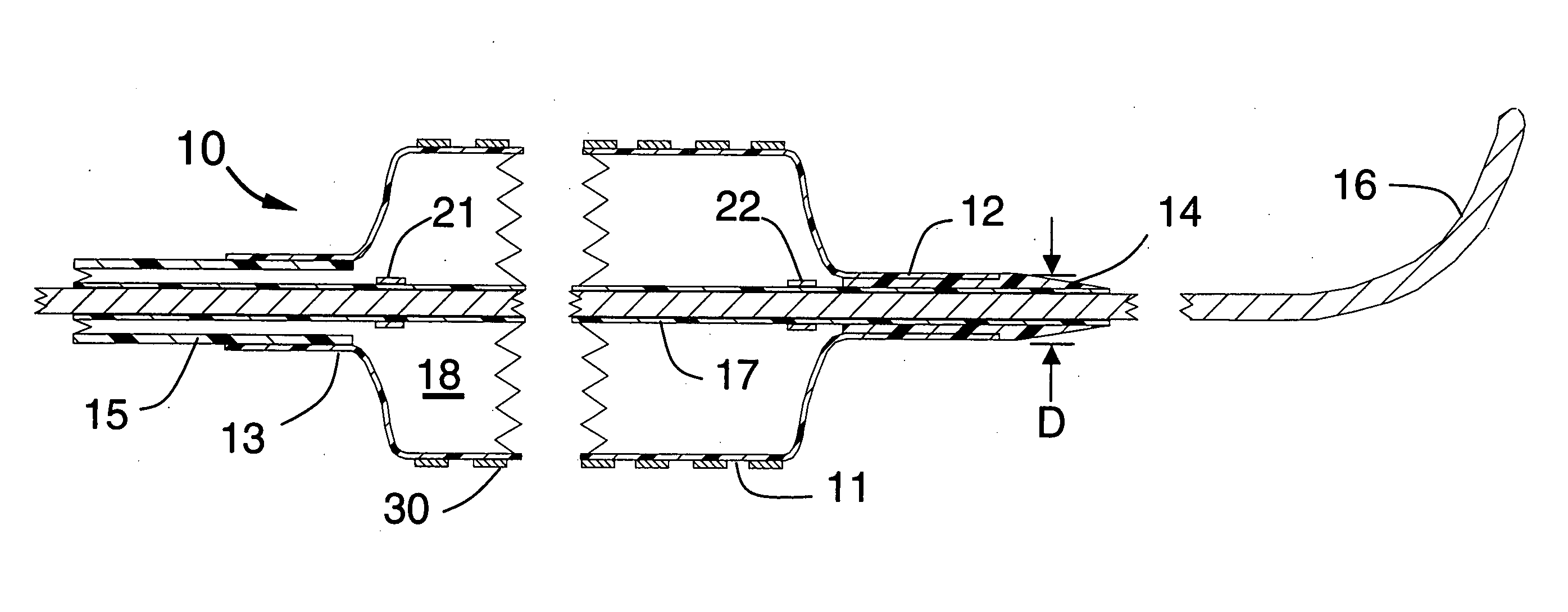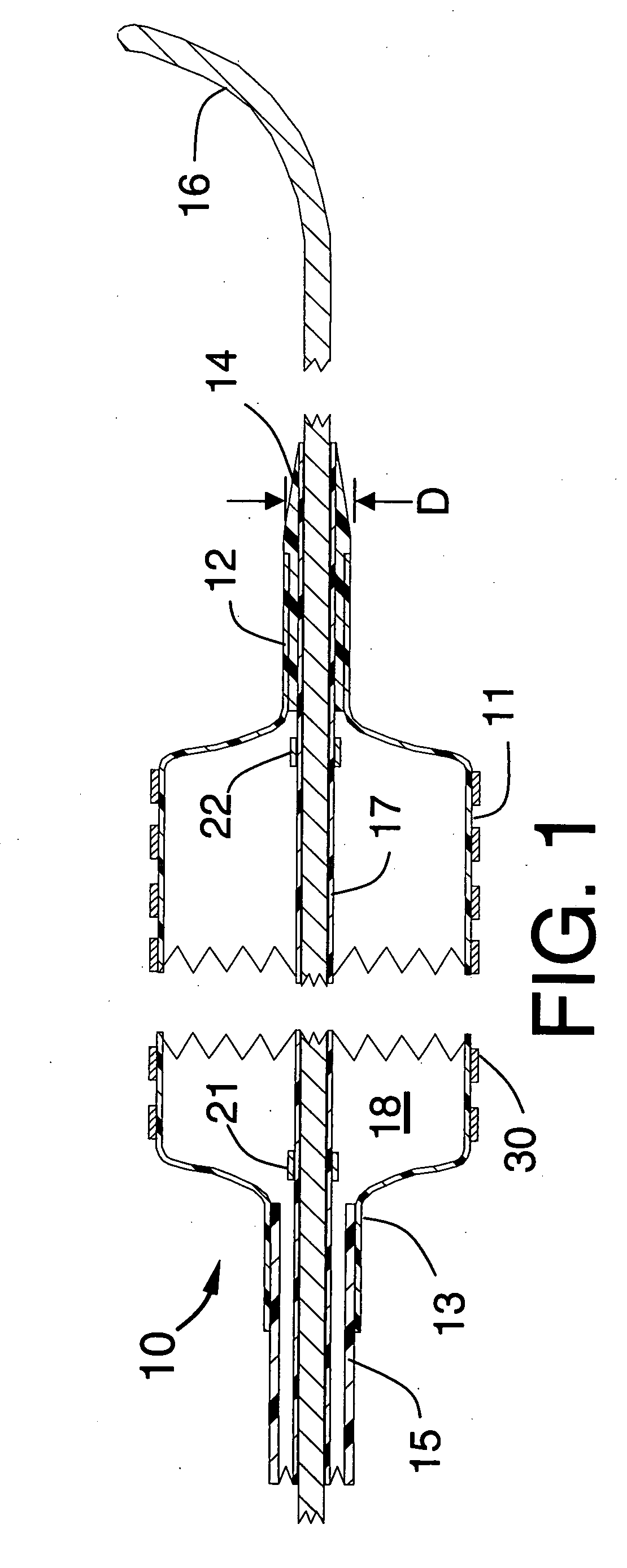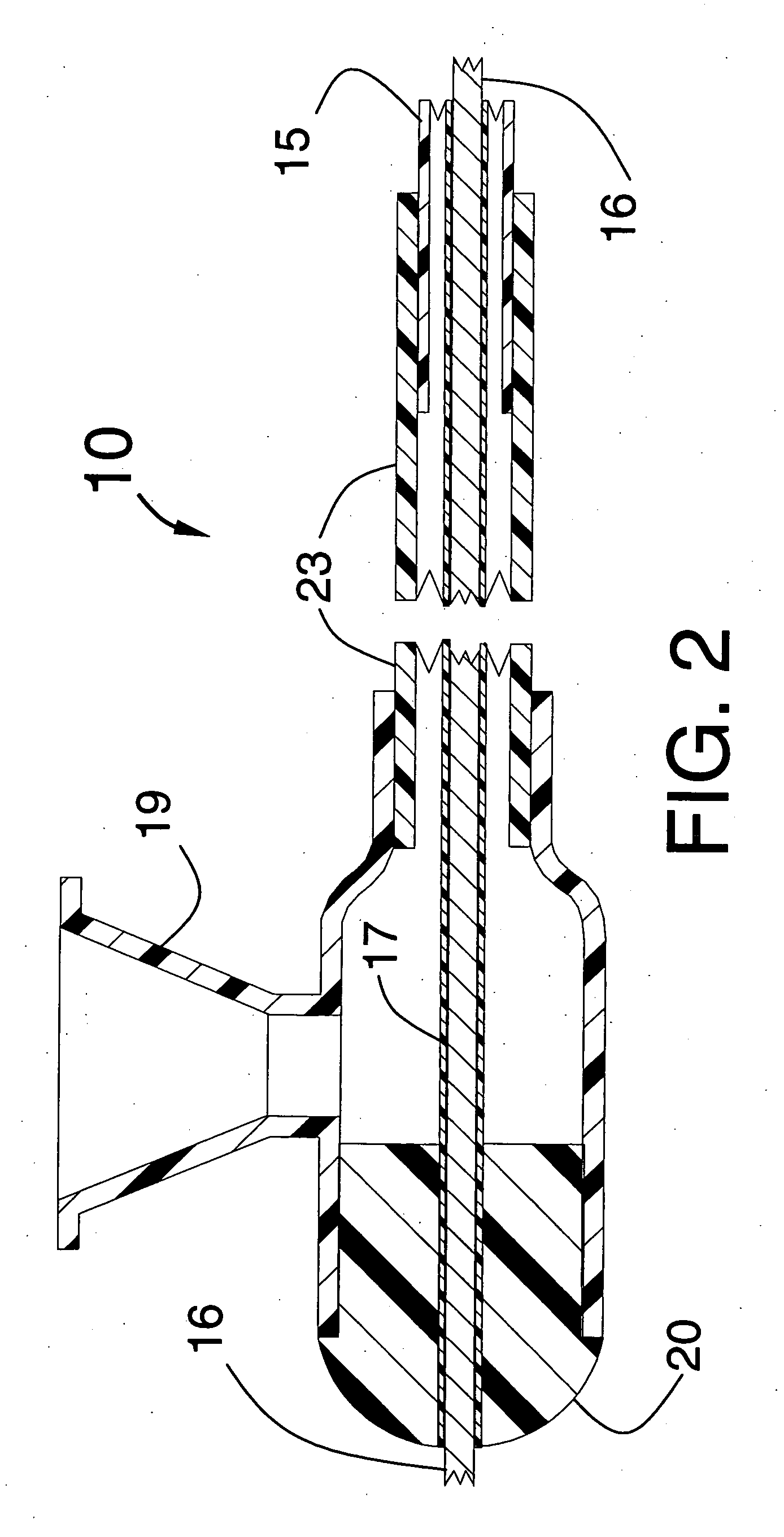Stent delivery system using a steerable guide wire
a technology of stent delivery and guide wire, which is applied in the field of stent delivery system using a steerable guide wire, can solve the problems of fixed guide wire, inability to steer, and inability to perform the same procedure, so as to save the cost of such a guide wire, reduce the time to perform the stent delivery procedure, and facilitate the stent delivery.
- Summary
- Abstract
- Description
- Claims
- Application Information
AI Technical Summary
Benefits of technology
Problems solved by technology
Method used
Image
Examples
Embodiment Construction
[0019]FIGS. 1, 2 and 3 illustrate a stent delivery system 10 having a fixed but steerable guide wire 16 that is placed within a guide wire tube 17. The distal end and proximal end of the guide wire tube 17 can be joined by a small amount of adhesive to fixedly attach the guide wire tube 17 to the steerable guide wire 16 to prevent the guide wire from moving longitudinally within the stent delivery system 10. The guide wire 16 would typically have a diameter that lies between 0.010 and 0.038 inches. The optimum diameter for use in coronary arteries will be approximately 0.014 inches.
[0020]FIG. 1 is a longitudinal cross section of a proximal portion of the stent delivery system 10 showing an inflated balloon 11 onto which the stent 30 is mounted, the balloon having a cylindrical distal section 12 that is fixedly attached to the distal seal 14 and the balloon 11 also having a cylindrical proximal section 13 that is fixedly attached to the distal end of the distal shaft 15. The distal ...
PUM
 Login to View More
Login to View More Abstract
Description
Claims
Application Information
 Login to View More
Login to View More - R&D
- Intellectual Property
- Life Sciences
- Materials
- Tech Scout
- Unparalleled Data Quality
- Higher Quality Content
- 60% Fewer Hallucinations
Browse by: Latest US Patents, China's latest patents, Technical Efficacy Thesaurus, Application Domain, Technology Topic, Popular Technical Reports.
© 2025 PatSnap. All rights reserved.Legal|Privacy policy|Modern Slavery Act Transparency Statement|Sitemap|About US| Contact US: help@patsnap.com



